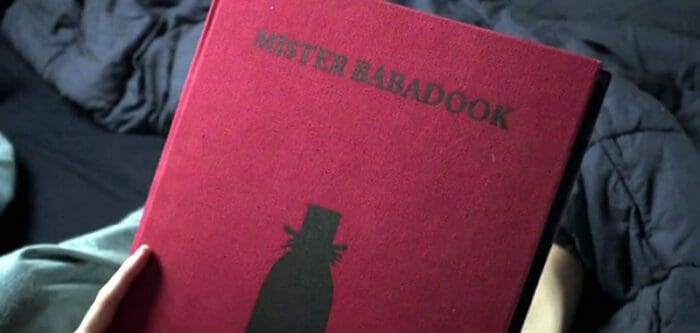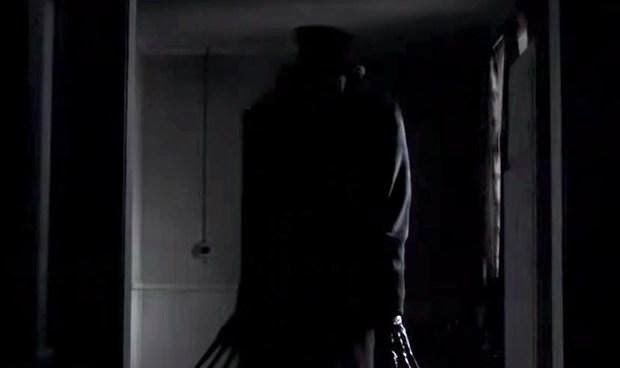 The Babadook is an independently made horror film from, almost, first time director Jennifer Kent. She based this film off her prior short film MONSTER, which I can’t really talk about yet because I haven’t seen it. That may actually be a fault of mine at this point because The Babadook is not only amazingly effective horror, but is also an amazingly well crafted character piece. This film has already received some buzz on the indie circuit but should be on every must-see horror list (if not every must see list in general).
The Babadook is an independently made horror film from, almost, first time director Jennifer Kent. She based this film off her prior short film MONSTER, which I can’t really talk about yet because I haven’t seen it. That may actually be a fault of mine at this point because The Babadook is not only amazingly effective horror, but is also an amazingly well crafted character piece. This film has already received some buzz on the indie circuit but should be on every must-see horror list (if not every must see list in general).
The film, set in Australia, centers around mother Amelia (Essie Davis) who gave birth to her son Samuel (Noah Wiseman) at the same time of her husband’s death. Left to raise her troubled son alone, Amelia internally battles between the mixed emotions of protectiveness and resentment towards her son.
This relationship alone is so strongly written that it could comprise an entire film on its own. Samuel loves his mother a lot but causes her great distress because he’s a misfit to the point that he almost seems mentally unstable. He also has an obsession with imaginary monsters that most boys his age would have grown out of already.
Amelia tries to cope with her son’s troubles amongst her family, friends and coworkers but does it in a rather unhealthy way. She balks whenever people try to bring up discussing her issues or the depression that she still deals with years after her husband’s death. Meanwhile, she defends her son’s behavior against the conflicting views of the school and her smug sister; all the while being quite disturbed and hateful of the way he acts.
This comes to a head when she, as a result of an argument with his current schoolmasters, removes him from his current school. She continually calls in sick work while Samuel lies in no-school limbo and their relationship is put to the extreme test while they spend every waking moment together.
As I already said above, this set-up is so strong that the filmmaker could’ve spent the remainder of the film examining the incredibly human dichotomy of love/hate familial relationships. Instead, a horror element is introduced and, instead of taking away from this strong character drama, it magnifies it.
Samuel and Amelia are preparing for bed and he picks a book off the shelf that neither has every seen before. The book describes a monster that comes-a-calling named the Babadook (based on the way it knocks on your door).
This creepily drawn fairy tale (as well as its later transformations) manages to be (in my opinion) one of the scariest elements of the entire film. The book is a pop up book and it appears to have a life of its own. Later, the characters within (in one of the more intense moments of the movie) gain the ability to move in ways impossible for any pop up book and result in some of the more gruesome imagery.

What is revealed is that the book is almost a living extension as well as a calling card for the creature that comes. The Babadook manages to avoid revealing itself very often, leading on the idea that it does not really exist. The casual glimpses that are given before the big climax reveal an intensely terrifying, elongated man-creature (with horrible claws, by god I cannot forget to mention those nightmare inducing claw hands) that resembles various monsters from german expressionist films and the works of Méliès (which are directly referenced by her late night TV watching).

When the creature cannot be seen, often because Amelia starts trying to enact the rule of “if I can’t see it from under the sheets, it’s not there”, it can still be heard. By god do I have to give it up to the sound designers also because they do a great job of creating a great atmosphere of various creepy noises throughout the house as well as an absolutely terrifying mixture of guttural, deep and screeching voices for the Babadook.
Pushed to limits of her own sanity, and finally accepting the monster as reality, Amelia must do all she can to protect Samuel from this creature that means to take him. That is… if she can also manage to protect him from her sleep deprived (Nightmare on Elm Street style), and child resenting self.
Once again, I really got to give it up to this director by making a character drama that interweaves so well with the horror elements of the film. Often, a set up character dilemma in a horror’s introduction is set aside and resolved in the third act (or, worst case scenario, dropped entirely) but in this film, the monster itself is entirely reliant upon the difficult mother/child relationship. In the process of protecting her son from the creature, the Babadook manages to constantly feed the hate that already exists within Amelia. When this occurs, the whole “don’t let it in” warning that underlies the entire plot takes on a new meaning.
In fact, in the early on in the film, the creature does not really seem to exist at all. The film then subtly hints at Amelia’s own want to create a monster that would kidnap Samuel. One such point is that neither Amelia nor Samuel knows of the origin of the strange book and yet it is offhandedly remarked later that Amelia used to write (that is, again, before Samuel came along and changed everything).
Even when the film concludes, it still seems to point towards The Babadook being a strange physical manifestation of Amelia’s own hateful feelings. I don’t want to entirely give up how things turn out but the film comes up with quite a clever way of representing how people learn to live with the darker sides of themselves without giving in to them.
Another thing I want to mention is how the film does an amazing job of playing with audiences’ emotions. To try to get us to understand how a mother could want to protect a child and, kind of, want him to die at the same time the film presents us with mixed views of Samuel (but ones that don’t entirely conflict). In many scenes, Samuel can easily be seen as a loving and caring child, one that is quite endearing and shows the strength of the bond between Amelia and Samuel. But it can still be seen that he is constantly awkward socially for his age and it is obvious why he does not get along with most kids or adults. Then there are the scenes where his strong emotions (and fears) result in fits and tantrums and OH MY GOD YOU WILL BEG FOR SOMETHING TO COME AND KILL THIS LITTLE FUCK. Yet in the end, when the threats really do become real, we are really reminded that Samuel is just a defenseless child. Despite what a little shit he really can be, we do want him to be saved.
Boiled down, this film sets out 2 jobs for itself and it accomplishes them both very well. First, it wants to use a horror storybook to teach the audience, and Amelia, about how someone could harbor feelings of hatred towards a loved one or their own child while still managing to be loving friend or family member. This dichotomous mixture of feelings can exist (often without the impact of the husband death scenario presented here) without completely destroying the relationship. The final lesson taught is that one of the major ways to deal with this emotion is not to pretend it doesn’t exist (thus risking a lapse into hate) but to acknowledge your feelings, reach out to others and take care to keep them from lashing out. Second, is that this movie wants to scare the shit out of you and it manages to do that in spades. After viewing, many a viewer will find themselves suspiciously viewing the roof of their bedroom or imagining an unaccounted noise coming from the floor (at least, you’ll think its your imagination).
